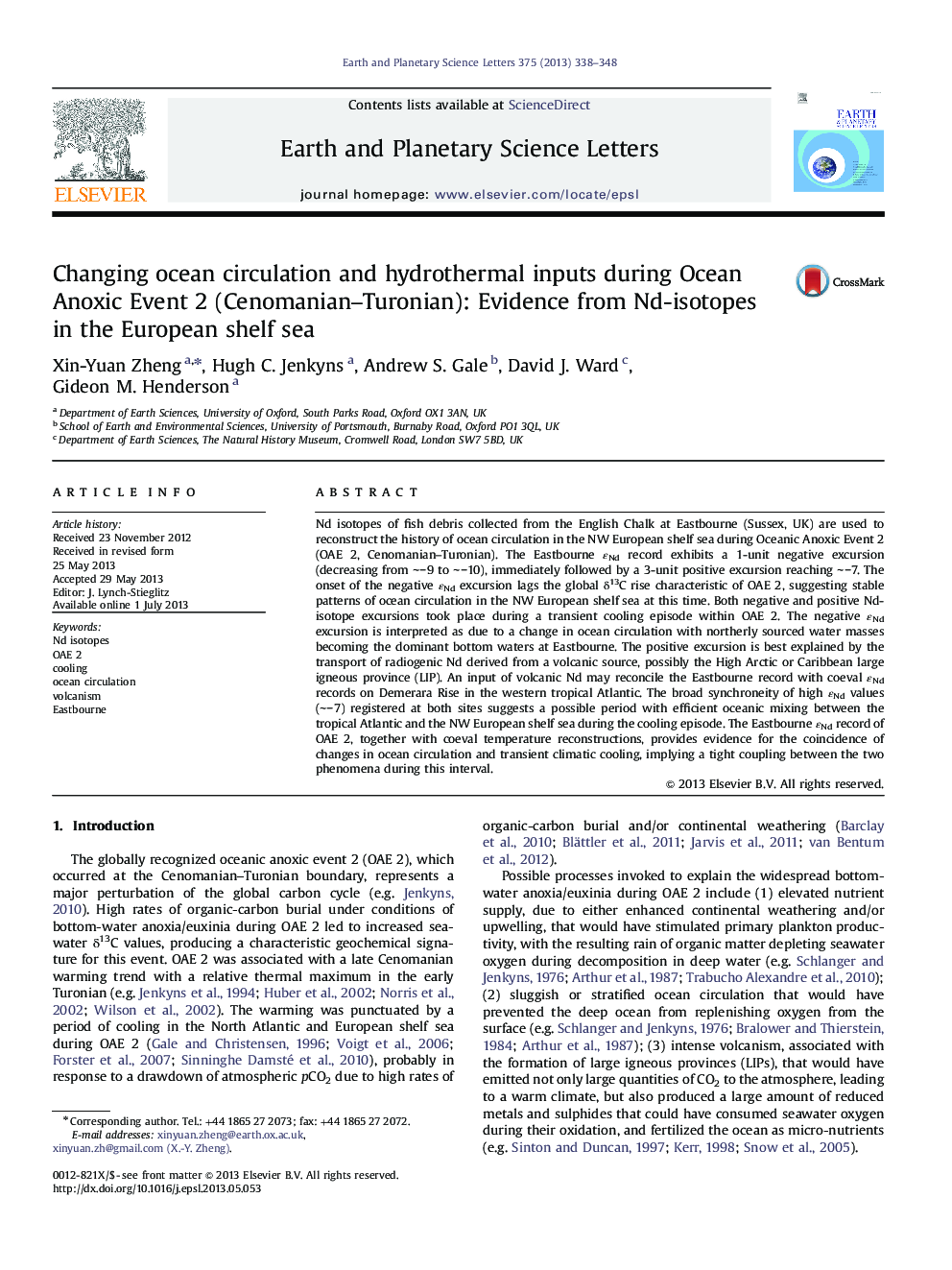| Article ID | Journal | Published Year | Pages | File Type |
|---|---|---|---|---|
| 6430231 | Earth and Planetary Science Letters | 2013 | 11 Pages |
â¢A new Nd-isotope record from the NW European shelf sea (Eastbourne) across OAE 2.â¢Negative and positive εNd excursions are found in the English Chalk during OAE 2.â¢Changes in ocean circulation associated with a climatic cooling during OAE 2.â¢An input of radiogenic Nd from LIP volcanism during OAE 2.â¢Possible enhanced latitudinal seawater exchange during transient cooling (OAE 2).
Nd isotopes of fish debris collected from the English Chalk at Eastbourne (Sussex, UK) are used to reconstruct the history of ocean circulation in the NW European shelf sea during Oceanic Anoxic Event 2 (OAE 2, Cenomanian-Turonian). The Eastbourne εNd record exhibits a 1-unit negative excursion (decreasing from â¼â9 to â¼â10), immediately followed by a 3-unit positive excursion reaching â¼â7. The onset of the negative εNd excursion lags the global δ13C rise characteristic of OAE 2, suggesting stable patterns of ocean circulation in the NW European shelf sea at this time. Both negative and positive Nd-isotope excursions took place during a transient cooling episode within OAE 2. The negative εNd excursion is interpreted as due to a change in ocean circulation with northerly sourced water masses becoming the dominant bottom waters at Eastbourne. The positive excursion is best explained by the transport of radiogenic Nd derived from a volcanic source, possibly the High Arctic or Caribbean large igneous province (LIP). An input of volcanic Nd may reconcile the Eastbourne record with coeval εNd records on Demerara Rise in the western tropical Atlantic. The broad synchroneity of high εNd values (â¼â7) registered at both sites suggests a possible period with efficient oceanic mixing between the tropical Atlantic and the NW European shelf sea during the cooling episode. The Eastbourne εNd record of OAE 2, together with coeval temperature reconstructions, provides evidence for the coincidence of changes in ocean circulation and transient climatic cooling, implying a tight coupling between the two phenomena during this interval.
